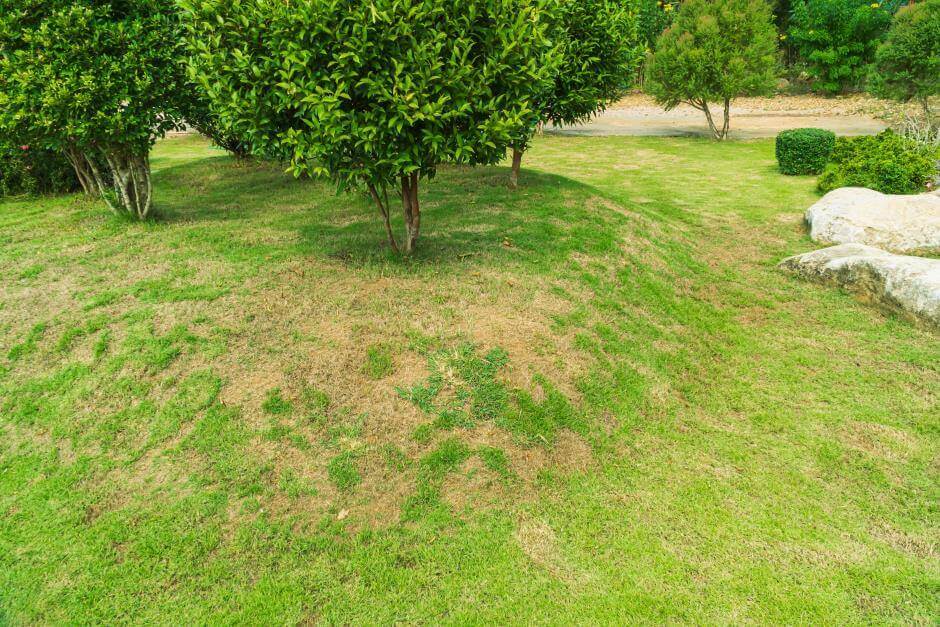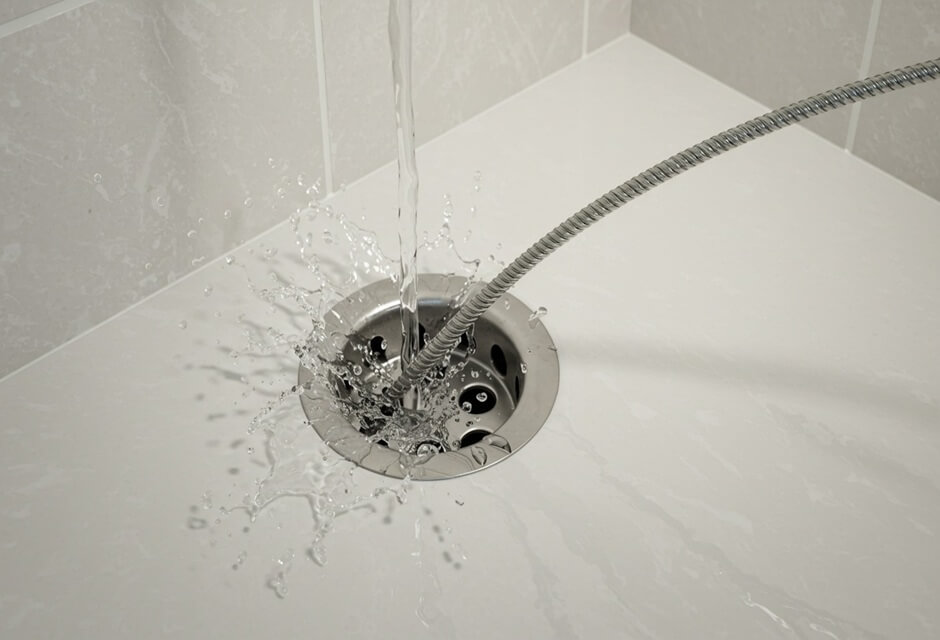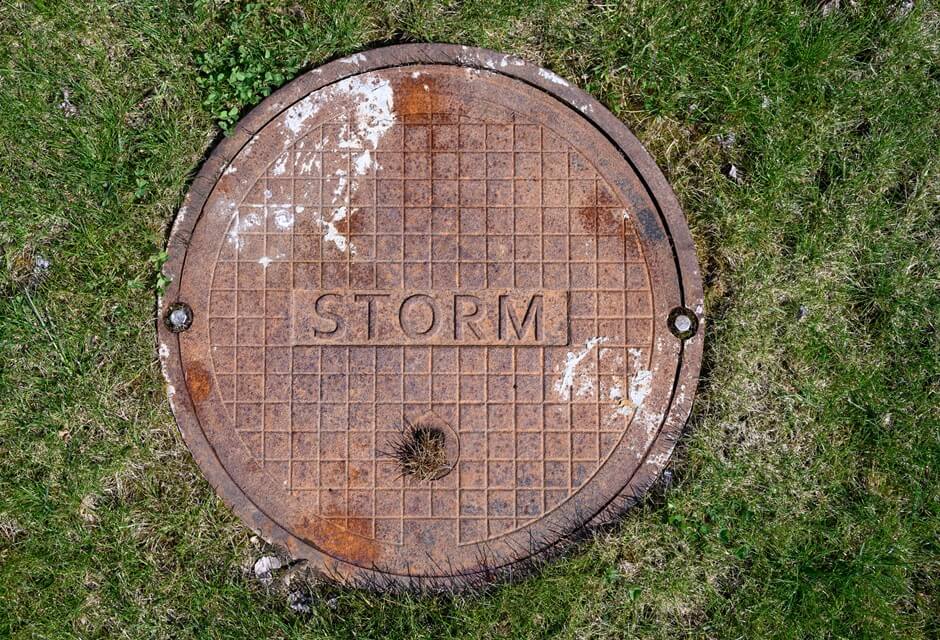
The appearance of brown patches on the lawn can quickly ruin the beauty and health of your yard. Proper watering, mowing, fertilization, aeration, weed control, and maintenance are the key tips for a lush green lawn.
If you are wondering how to revive your lawn and say farewell to those stubborn brown patches, here is everything you need to know! In this article, you'll delve into the causes of brown patches, effective treatments, and essential tips to control this common lawn issue. Keep reading!
What Is Brown Patch In Lawns?
The brown patch disease in a lawn is a common fungal disease that affects lawns, leaving behind irregular patches of dead or dying yellow grass. The patches range in size from a few inches to several feet and thrive in warm and humid conditions, appearing most during the summer months.
If you do not treat brown patches in summer lawn ASAP, they can quickly spread and turn into large brown patches in the lawn that take over your entire yard, leading to a dull and lifeless landscape.
What Causes Brown Patches In Lawns?
There are several factors that contribute to the development of brown patches in lawns. Take a look at the list below.
- A fungus called Rhizoctonia solani, which thrives in moist environments
- Excessive watering
- Poor drainage
- Overgrown thatch
- Compacted soil
- Excessive nitrogen fertilizer
- Low mowing heights
- Dog urine
By understanding these underlying causes, you can take proactive measures to prevent and treat brown patches. It gets easier to fix them too.
How To Control Brown Patch In Lawns In 6 Steps
If you want a lush green lawn, prevention is the secret to control brown patches. Here are six essential tips for achieving a vibrant and healthy lawn.
1. Proper Watering
Water your lawn deeply and infrequently to encourage deep root growth. Avoid frequent shallow watering, as it promotes shallow root growth and makes your lawn more susceptible to drought and stress. Water in the early morning to allow time for the grass to dry before evening, reducing the risk of disease.
2. Regular Mowing
Maintain the proper mowing height for your grass type and avoid cutting more than one-third of the grass blade at a time. Taller grass shades the soil, reduces weed competition, and promotes stronger root development. Keep your mower blades sharp to ensure clean cuts and prevent damage to the grass.
3. Adequate Fertilization
Feed your lawn with a balanced fertilizer according to its specific needs, and choose a slow-release or organic fertilizer to provide a steady supply of nutrients over time.
Avoid over-fertilization, as excessive nitrogen can lead to rapid growth, making your lawn more susceptible to diseases like brown patches and making you spend lots of money when it comes to the cost of fertilizing the yard.
4. Aeration And Dethatching
Regularly aerate your lawn to improve soil compaction and enhance water and nutrient absorption. Dethatching, when necessary, removes the layer of dead organic material (thatch) that accumulates on the soil surface, allowing for better airflow and water penetration.
5. Weed Control
Keep weeds at bay to maintain a healthy lawn. Regularly inspect and manually remove weeds as soon as they appear. Use herbicides sparingly and selectively, targeting only the affected areas to minimize harm to the surrounding grass.
6. Proper Maintenance
Last but not least, pay attention to overall lawn care maintenance. It includes removing debris, such as leaves and twigs, to prevent smothering of the grass. Avoid excessive foot traffic, as it can compact the soil and weaken the grass. Overseed bare patches and thin areas to promote a denser lawn.
How To Fix Brown Patch In Lawns?
Restoring the health and beauty of your lawn begins with identifying and rectifying the underlying issues that contribute to brown patches. Here are steps for you to follow!
- Improve drainage by aerating the soil to reduce compaction and allow better water absorption.
- Regularly remove thatch build-up to enhance air circulation and prevent moisture retention.
- Adjust your watering schedule, ensuring that your lawn receives adequate moisture without creating a damp environment that encourages fungal growth.
- Avoid over-fertilization, as excessive nitrogen can weaken the grass and make it more susceptible to brown patches.
That will definitely help you recover your lawn.
How To Treat Brown Patches In Lawns?
Start by using a sharp mower blade to cut the grass at the recommended height, ensuring clean and even cuts. Remove any diseased grass clippings to minimize the spread of the fungus. Apply a fungicide specifically formulated to combat brown patches, following the instructions carefully.
Remember: once brown patches have appeared, it is important to take immediate action to prevent further damage. Also, brown patches in lawn treatment will promote the recovery of its healthy green appearance.
Still unsure if you can deal with the brown patches in the lawn? Call Wisercosts' landscapers and they will solve your problems!
 Let a landscape architect give you an estimate on your project
Let a landscape architect give you an estimate on your project





 Member of the
Member of the